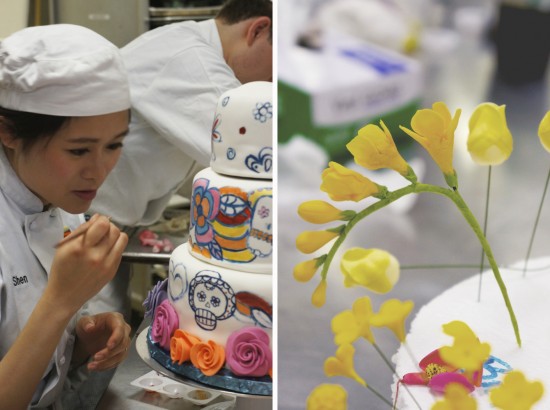Cake decorating is more than just a culinary skill; it’s an art form that combines creativity, technique, and a bit of magic. Whether you’re a beginner eager to learn or a seasoned baker looking to refine your skills, this guide will walk you through everything you need to know about cake decorating.
In my journey as a cake decorator, I’ve learned that each cake tells a story, and how you decorate it adds depth to that narrative. Let’s dive into the wonderful world of cake decorating!
Understanding the Basics of Cake Decorating
The Importance of Cake Decorating
Cake decorating elevates a simple baked good into a stunning centerpiece for any occasion. It allows personal expression and creativity, making each cake unique and special.
Cake Decorating Supplies: What You Need
Before you can start decorating, it’s essential to have the right tools at your disposal. Here’s a list of must-have decorating supplies:

- Basic Tools: Offset spatula, turntable, piping bags, and tips.
- Decorating Fats: Buttercream, fondant, and ganache.
- Coloring Supplies: Gel food colors and edible luster dust.
- Textures and Molds: Silicone molds and texture mats.
- Decorations: Sprinkles, edible pearls, and other embellishments.
Cake Decorating Techniques

1. Frosting Techniques
Buttercream Frosting
Buttercream is a classic choice for cake decorating. It’s versatile and can be flavored or colored easily. Here’s how to achieve a smooth finish:
- Start with a crumb coat to seal in the crumbs.
- Apply a thicker layer of buttercream using an offset spatula.
- Use a bench scraper to smooth the sides and top.
Fondant Finishing
Fondant gives cakes a polished look but requires practice to apply effectively. Follow these steps:
- Roll out the fondant on a powdered sugar-dusted surface.
- Carefully lift and drape over the cake.
- Smooth out with your hands or a fondant smoother.

2. Piping Techniques
Piping adds detail to your cake and can be done using different tips for various effects. Here’s a comparison of common piping techniques:
| Technique | Tip Used | Description |
|---|---|---|
| Rosettes | 1M | Swirling to create floral shapes. |
| Shells | 21 | Creating a decorative border. |
| Writing | 2 or 3 | Using piping to write messages. |

3. Texturing and Stenciling
Adding texture gives your cake a unique feel and look. Use stencils to create specific designs:
- Secure the stencil on the cake.
- Dust over with powdered sugar or cocoa powder.
- Carefully remove the stencil for a beautiful design.
Pros and Cons of Using Fondant vs. Buttercream
Choosing between fondant and buttercream can impact your cake’s overall look and taste. Here’s a quick overview:

| Aspect | Fondant | Buttercream |
|---|---|---|
| Taste | Less flavorful, often too sweet | Rich and creamy, versatile |
| Appearance | Sleek and polished finish | Soft, more rustic look |
| Workability | Can be difficult for beginners | Easy to spread and pipe |
Advanced Cake Decorating Techniques

1. Using Edible Images
Edible images add a personal touch to your cake. They can be created using edible ink printers and are perfect for birthdays, weddings, or any themed event.
How to Apply Edible Images
- Ensure your cake is frosted and chilled.
- Peel off the backing carefully.
- Press the image onto the prepared surface.

2. Airbrushing Techniques
Airbrushing can create beautiful gradients and effects on cakes. Here’s a beginner’s guide to airbrushing:
- Choose your colors and set up your airbrush.
- Practice on a piece of parchment paper before applying to the cake.
- Use stencils for intricate designs and patterns.
Personal Experiences: My Cake Decorating Journey
Reflecting on my cake decorating journey, I remember the first cake I decorated. It was for my best friend’s birthday, and I opted for a simple buttercream finish. I was nervous, but seeing her face light up made every moment worthwhile. Over the years, I’ve experimented with different techniques, and what once felt intimidating has become second nature.
Top Tips for Beginners
- Start with simple designs before tackling intricate patterns.
- Practice makes perfect—spend time honing your skills.
- Don’t be afraid to make mistakes; they often lead to creativity!
Common Cake Decorating Mistakes and How to Avoid Them
Mistake #1: Skipping the Crumb Coat
A crumb coat is essential for a clean finish. Skipping it can lead to unsightly crumbs in your final frosting. Always apply a thin layer of frosting to seal in those crumbs before the final frosting.
Mistake #2: Not Using the Right Consistency
Whether buttercream or fondant, having the right consistency is crucial. A too-thin frosting will slide off, while a too-thick one will be difficult to spread. Ensure you achieve a smooth, spreadable texture.
FAQs About Cake Decorating
What is the best frosting for decorating cakes?
Buttercream is a popular choice due to its flavor and versatility, but fondant can offer a more polished finish.
How can I make my cakes look professional?
Practice key techniques such as smooth frosting, piping, and using decorations strategically. A clean workspace also contributes to a professional look.
Can I freeze a decorated cake?
Yes, most cakes can be frozen for a couple of weeks. Just ensure they’re well-wrapped to avoid freezer burn.
What can I use instead of fondant?
Alternatives to fondant include modeling chocolate, marzipan, or a thick layer of buttercream.